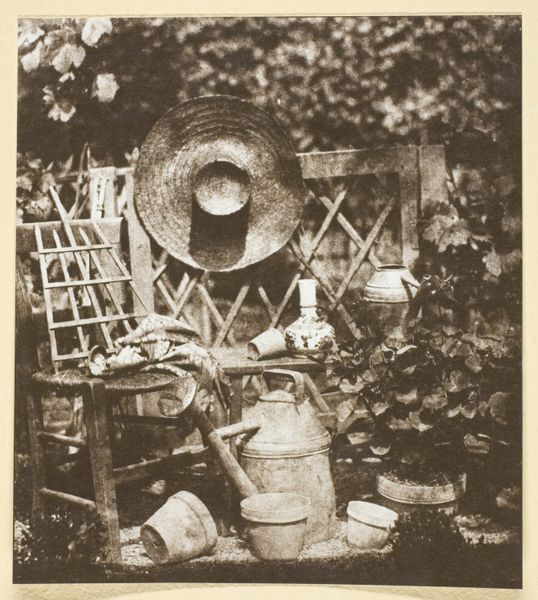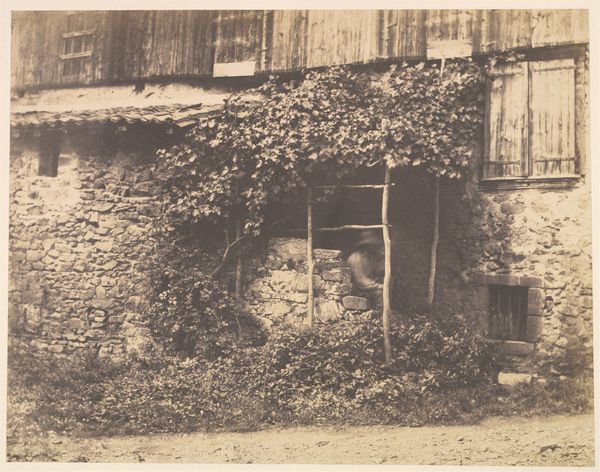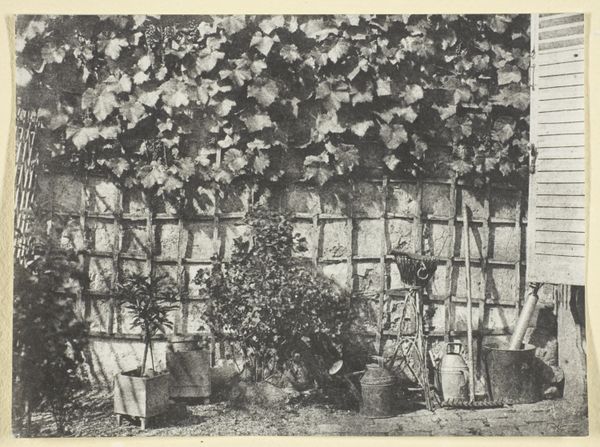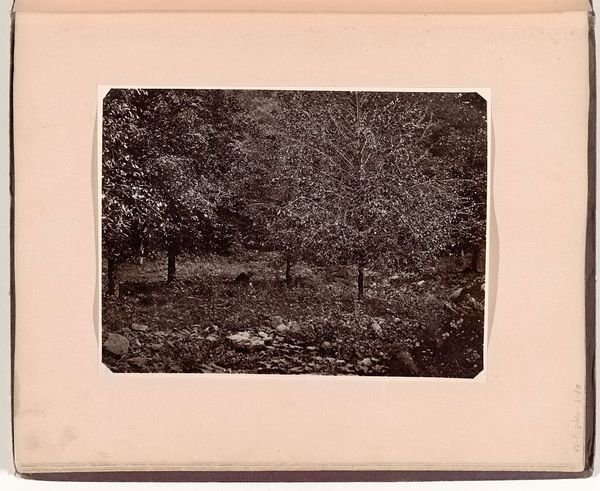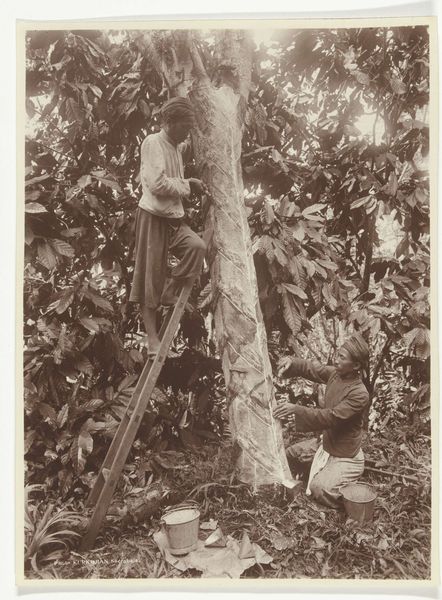
Dimensions: 17.2 × 22.6 cm (image/paper/mount)
Copyright: Public Domain
Editor: This is "Chaise dans un Jardin," or "Chair in a Garden," possibly created between 1842 and 1865 by Hippolyte Bayard. It's a photograph, printed on paper, and currently at the Art Institute of Chicago. I’m struck by the stillness of it. A humble scene made almost monumental. What draws your eye, what story do you think it's telling? Curator: Isn't it fascinating how a simple garden chair can hold so much poetry? I find myself drawn into its quiet contemplation. It makes me wonder about the unseen gardener, doesn’t it? What did their day look like? The chair and watering can feel like character actors. It feels inherently French, n'est-ce pas? But perhaps also, just… human. What is your take on its appeal, why do you think the artist decided on it? Editor: The artist must have appreciated the light and shadow in this very moment. The diagonal emphasis gives the picture a dynamic balance, I am sure. It invites you to daydream… But how typical is this type of composition for the artist? Curator: Well, Bayard was quite the revolutionary, actually. One of photography's unsung heroes. This work, along with others like it, speaks to photography’s capacity to immortalize quiet beauty. What seems simple is actually a testament to a groundbreaking vision. The composition is surprisingly modern, I agree. Editor: Knowing Bayard was a pioneer really transforms how I see the photo. It’s like peeking into the origins of something profound. Curator: Exactly! And that is what makes art so timeless, don’t you think? It holds a mirror to ourselves across time, across mediums. Editor: Absolutely! It really makes you reflect about the possibilities of perception. Thanks for sharing this with me. Curator: My pleasure. It is always enlightening.
Comments
No comments
Be the first to comment and join the conversation on the ultimate creative platform.
